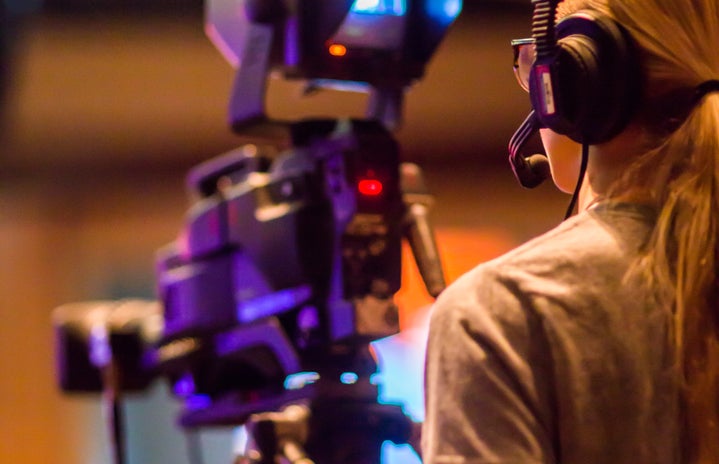The female presence has always been questioned in society. Women have struggled continuously for their rights, voices, stories, and struggles to be heard. Although there have been various victories and achievements in female history, to this day women have to fight for a space in the media and in the working field. The problem took big proportions in social media recently when the 2023 Academy Awards nominees were announced, and to the public’s surprise there was not one woman nominated for the main categories of the night, like “Best Director”.
Most of the recently recognized projects have been overwhelmingly produced, directed, composed, and written by men. This brought back to light an old debate: Is Hollywood aiming for female representation?
The beginning of Hollywood
Hollywood’s productions had one of the greatest impacts in the history of cinema. This was further established in the 20th century, especially in the 20s, when the US cinema had an expansion process and began to be respected in the industry. In that same period, the biggest award ceremonies started to be conceptualized and go live on TV, one of them being the Oscars, which had its first ceremony in 1929.
However, it is indispensable to reflect on the historical context in which the expansion took place. In the 1920s, women had a specific role in society – one that they continue to fight – reserved mainly for staying at home, cooking, and caring for the family. Women were constantly seen as an object of desire and pleasure, therefore, their opportunities in the working field were extremely discouraged and judged by society. The cinematographic industry had no different view than any of the other fields, therefore, female presence was close to none or wasn’t well received.
In that sense, Hollywood’s fundamental structures were developed with misogynistic and racist ideas, which became rooted in their future views. Consequently, Hollywood prioritized constantly the reality of white heterosexual men, excluding many groups, stories, and battles. A simple example of that is the Academy, which decides who is nominated and the winners of the Oscars since it’s constituted by renowned professionals. However, it is only possible to become part of the Academy by being indicated by having been nominated twice in at least one of their categories and having their admission sponsored by at least two members.
How is that harmful to representativity?
It has a direct impact on the representativity seen in Hollywood, since it’s easier and more comfortable to nominate professionals that are closer to them, which most commonly means people from their own social ethnicity and social background. In an interview with the Brazilian screenwriter Carissa Vieira, she admitted that as it is an industry formed mainly by men, it’s hardly possible for women to have a spot in the field.
“Since you have an industry, basically made up of white men – even in Brazil – there is a great difficulty for women in the audiovisual sector to find jobs in the areas they want”, she said.
Female Representation: Fact or Lie?
Due to the misogynistic narrative in which Hollywood began, female representation continues to be questioned in the field, since it’s more common to see men cinematographers in the media than women. The first-ever woman to be nominated for the Oscar for “Best Director” – the most acclaimed award of the night – was the Italian filmmaker Lina Wermuller, with the movie “Seven Beauties” in 1976, 47 years after the first award ceremony.
Even now, after 85 editions of the Academy Awards, there have only been seven women nominated for “Best Director”, and only three of them have won. This year’s edition was a prime example of the lack of female members in the Academy, since not a single woman was nominated for the category and many of the other main nominations. Vieira also pointed out that “there are some areas that are dominated by men, and photography in cinema is one of them. There are many women, very capable, but it is still difficult for many to have a long career in the sector”.
According to the report Celluloid Ceiling, in the year 2022, women represented 24% of directors, writers, producers, editors, and cinematographers working on the top 250 grossing films, which resulted in a 1% decrease compared to the year 2021 – it is the first year in which two female directors were nominated for the “Best Director” Academy Award. However, it was even revealed by an EEOC report that major Hollywood Studios “systematically discriminated” against female directors. The study showcases not only how few opportunities women are given, but how the field purposefully chooses men over women.
Carrisa reflected on the low percentage of women in the cinematographic industry – especially in roles like writers and producers: “There are many women in all areas, there are many extremely qualified professionals, there are many women with scripts that have women as protagonists. What doesn’t exist is people interested in making women’s projects possible”.
She also added that the lack of female presence in the field is highly connected to the abuse and injustices they have to endure: “Women must always be proving themselves and proving that they know how to do things. Besides, a woman can’t make mistakes. Men make mistakes and it’s ok, women can’t. Your scripts need to be perfect, in addition to the fact that women in the industry go through different types of harassment and, as they are always afraid of losing their jobs, they accept harassment and naturalize it”.
When asked about her journey in cinema, she revealed she didn’t believe she could make it at first and it ended up being her second college degree. The screenwriter also talked about her experiences in the field and moments in which she suffered due to the lack of female presence in the writing rooms:
“I was hired a lot to be the only black woman in the writer’s room. I got to work in a screenwriting room that only had women, except for the chief screenwriter, and he was very curious because our experiences were the reasons for our scripts but he said that it was not a true experience, and women would not connect with the project”, explained.
In that sense, she admitted that women in the writing room constantly accept changes that they don’t believe in or they become silenced by the men in the room. Martha Lauzen, executive director of the Center, talked about this for the Study of Women in Television and Film: “It’s odd to talk about reaching historic highs when women remain so far from parity”.
The Impact on Hollywood’s Productions
It is clear that Hollywood’s female representation among filmmakers still has a long path ahead till it’s fully diverse and can represent stories with the empathy and respect their characters deserve. However, that does not only impact the process of filmmaking but the actual results that are seen on screen. In that sense, women in cinema are constantly represented within the classic and stereotypical view that white men have of them. Therefore, women have fewer real representations of the struggles and the reality of being a woman, because of that, they don’t see themselves portrayed on the big screen.
Several women have been trying to break the ongoing cycle to depict women as they are in reality: independent individuals with real struggles other than a bad hair day and a silly breakup, having much to show to the world through cinematographic art. In that sense, when represented by women, female characters gain tridimensionality, becoming a real representation of what it is to be a woman in a misogynist society, and illustrating human existence as it is. Movies made by women such as Little Women (2019), Lady Bird (2017), and Booksmart (2019), were made in praise of women and their experiences, which reverts the way women are seen and represented in the film as well as in real life.
“I can see hope nowadays and think that we have an opportunity. If we don’t have hope and believe, and try to do our part, there’s no point in continuing. I keep the future, I believe it’s worth it. Storytelling is a very wonderful thing. We need to tell stories. I can’t think of the next generation growing up seeing white men as protagonists”, Carissa concludes.
—————————————————————–
The article above was edited by Isadora Costa.
Liked this type of content? Check Her Campus Cásper Líbero home page for more!


